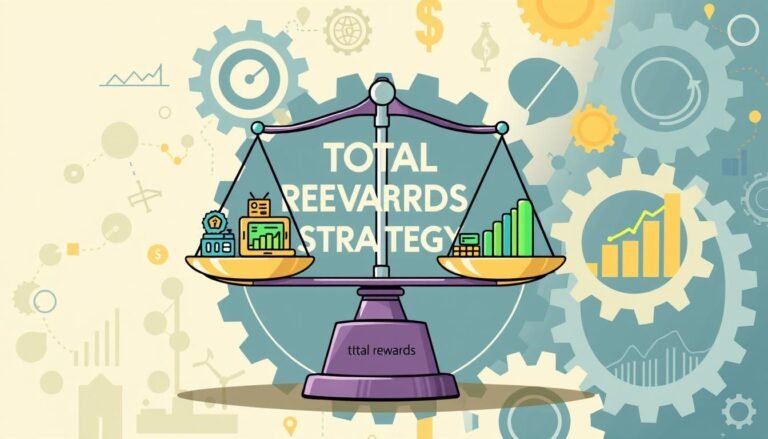Organizational Psychology Strategies for Effective Change Management in Irish Enterprises
Picture the scene in Dublin on a Monday morning. Katie, an HR manager at a tech firm, gets an email titled “Urgent: Upcoming Organizational Changes.” Her heart drops as she opens it. The email details a plan for new project management software, which she knows may face opposition. She recalls how past efforts led to communication issues, missed deadlines, and lower morale.
Katie’s worries are shared by many. More than 45,000 people worldwide have learned Prosci’s change management approach. This shows how important managing change well has become. Prosci’s method, supported by two decades of study, emphasizes the key role psychology plays in change. Models like ADKAR and those by Lewin and Kotter stress this point.
In Irish companies, with less than 40% success in big changes, this psychology is vital. Pinpointing why people resist – like not acting, putting things off, or spreading rumors – can turn a tough transition into a smooth one. Early and clear communication from leaders can help handle such resistance. This paves the way for an easier change journey.
Research highlights the critical role of top management in change success. A Prosci study ranked executive sponsorship as the prime factor in a change’s victory. This point is crucial in Ireland, where leaders may resist change themselves while being key to its success.
Two decades of research plus findings from 38 studies, 12 in healthcare, prove the value of using psychology in change. Tackling resistance directly or benefiting from quality management, psychological approaches greatly improve transformation.
Key Takeaways
- Understanding organizational psychology is essential for effective change management in Irish enterprises.
- Prosci’s ADKAR model, Lewin’s Change Management Model, and Kotter’s theory offer structured frameworks for navigating change.
- Clear communication and active executive sponsorship are vital in addressing resistance to change.
- Leadership involvement at various levels significantly impacts the success of change initiatives in Irish organizations.
- Organizational psychology principles, backed by extensive research, can lead to successful enterprise transformation.
Introduction to Change Management in Irish Enterprises
Change management in Ireland is key for businesses looking to stay competitive and react to global changes and digital progress. The ADKAR Model and other strategies are being used in Irish enterprises. They make changes smoother and help achieve goals faster.
Importance of Organizational Psychology
Understanding human behavior is critical for change management to succeed. Irish enterprises use this insight to tackle the challenges of change well. Knowing how employees react helps change managers create better plans. This reduces resistance and builds a culture that welcomes change.
Current State and Challenges
Yet, there are hurdles to smooth change in Irish businesses. The public sector faces bureaucracy and scarce resources. Technological progress also demands continuous adaptation. To deal with this, change management courses are advised. They prepare leaders to handle changes effectively.
Studies show that a mix of approaches is best for successful change. Listening to different views and using various theories can make change efforts more impactful.
About half of change efforts see big success. Staying focused during changes, learning from past mistakes, and applying new insights are crucial steps. Such strategies reduce costs, cut down waste, and boost productivity and innovation in the long run.
Understanding Organizational Behavior in Irish Businesses
In the changing landscape of Irish business, knowing about organizational behavior is key to managing changes well. With tech advancing fast, Irish companies often need to switch things up. This means it’s important to grasp OB theories and how they work in real life.
Key Concepts and Theories
OB looks into how people and groups behave at work. Relevant OB theories for Irish firms include several important ones:
- Maslow’s Hierarchy of Needs: This theory shows we need to meet basic needs first, then we can focus on higher ones.
- Herzberg’s Two-Factor Theory: This theory points out the difference between things that make us unhappy if not right (hygiene factors) and things that make us happy (motivators).
- McGregor’s Theory X and Theory Y: These theories discuss different ideas about how managers view employee motivation and work.
These theories help us understand why employees act the way they do. They guide us in creating an environment where people can work their best, especially when we are making changes.
Application in Change Management
Change in Irish companies aims to make things better for everyone. Strategies in Ireland focus on good communication, planning, training, and getting everyone on board. Knowing about OB helps managers deal with change pushback. They ensure people know what’s going on, feel part of the change, and sometimes get rewards.
In Ireland, change can happen slowly or quickly. It affects more than just projects; it shapes how a whole organization works. Handling change well brings more team spirit, better jobs, higher productivity, and improved work quality.
The Irish public sector is facing big changes too. More project management, flexible working, and digital shifts are happening, also influenced by the pandemic. Despite few resources, investments aim to improve how changes are managed by using project management offices (PMOs).
To make change work in Irish firms, it’s important to link change plans with the bigger company goals, get managers involved, and track how things are going. This approach makes change better, keeps it going, and helps the company grow.
| Aspect of Change Management | Details |
|---|---|
| Stakeholder Involvement | Typically a change team consists of about 10 individuals, including front-line employees and supervisory staff. |
| Managerial Impact | Involvement of managers significantly influences employee perception and engagement. |
| Communication | Crucial for alleviating fears and ensuring transparency during the change process. |
| Employee Engagement | Involving employees in the change process enhances their sense of ownership. |
| Feedback Mechanisms | Soliciting feedback throughout the change process helps in adapting strategies for better outcomes. |
| Common Pitfalls | Automating outdated processes and failure to align strategies with organizational goals can hinder change management projects. |
The Role of Leadership Development in Corporate Transformation
Leadership development is key for leading successful corporate changes in Irish businesses. As firms deal with changes, the need for great leadership is vital. It ensures everyone welcomes and handles change well. In this part, we look at what makes a leader good at leading change and the skills they need.
Transformational Leadership
Transformational leaders inspire their team to do better and focus on always improving. They make sure everyone’s personal goals fit with the company’s vision. This makes the team work together towards the same purpose. Leaders with these skills can guide their companies through big changes by:
- Visionary Thinking: Setting a clear and compelling vision for the future.
- Inspirational Motivation: Encouraging employees to achieve their best through empowerment and support.
- Personalized Coaching: Providing tailored feedback and development opportunities.
- Intellectual Stimulation: Challenging the status quo to foster innovation and creativity.
Leadership Skills for Effective Change
Leaders need specific abilities to bring about successful change. Training programs help leaders gain these skills. Mastering these skills helps leaders lead their organizations through big changes. Some must-have skills include:
- Effective Communication: Clearly conveying the vision, goals, and processes of the change.
- Adaptability: Being flexible in approach to navigate through unexpected obstacles.
- Decision-Making: Making strategic decisions under pressure to achieve desired outcomes.
- Empathy: Understanding and addressing employee concerns and fostering a supportive environment.
- Collaboration: Encouraging teamwork and leveraging diverse perspectives for innovation.
Shockingly, only 22% of business changes actually succeed. This shows how crucial it is to train leaders well. For more than 15 years, experts like Dr. Cheryl Jackson have worked with big companies to make changes happen. Digital changes, especially, need leaders to blend tech with goals. This proves that good leadership, learning, and technology are all key to successful change.
Creating a Robust Communication Plan
Good communication is key during any big change. Companies need a strong plan to keep everyone informed. This builds trust and gets people more involved. It helps employees understand and support new changes.
Transparent Communication Strategies
Being open and honest is crucial in communication. A clear and honest plan reduces confusion and stops false news. It lets workers know why changes are happening. This makes them more supportive. A survey by Bain and Company found that 43% of firms use open communication to handle changes well.
Building Trust and Engagement
Trust takes time and happens when leaders speak honestly. This makes people more willing to get involved and support changes. Sadly, only 13% of employees in the U.S. think their bosses communicate well. This shows a big need for better communication.
Making sure everyone is on board with changes matters a lot. When people understand and engage with changes, they help those changes succeed. This is why 43% of executives see engaging employees as key during changes. It’s all about making employees feel important and keeping them informed.
“A communication plan must be more than just a series of messages. It should be a strategic framework that ensures information flows freely, fosters trust, and engages employees at every level of the organization.”
Using a strong communication plan can help companies handle changes well. It focuses on being clear, building trust, and getting everyone involved. These steps boost the success of change and strengthen the company as a whole.
| Management Technique | Usage Percentage |
|---|---|
| Strategic planning | 43% |
| Customer relationship management | 43% |
| Employee engagement | 43% |
| Benchmarking | 40% |
| Balanced scorecard | 38% |
| Core competencies | 36% |
| Outsourcing | 36% |
| Change management | 35% |
| Supply chain management | 34% |
| Mission and vision statement | 33% |
OB Strategies for Effective Change Management in Irish Enterprises
Since 2007, Irish businesses have faced tough times. To stand strong, they must use smart OB strategies. These strategies blend the study of how organizations work with solid plans to make business changes work.
Change that lasts starts with careful looks at every part of a business. A RACI analysis helps by showing who’s doing what in the change. And a 3Cs check looks at if those leading are up to the task.
These methods also highlight how important it is to follow plans closely and to get support from the top. Making sure everyone knows and follows the big plan is key to success in Ireland’s changing business world.
“Progress is impossible without change, and those who cannot change their minds cannot change anything.” – George Bernard Shaw
It’s also key to talk openly about how a business’s culture affects plans. Linking training plans closely to where money goes makes sure everyone is working toward the same goals.
| Success Factor | Description |
|---|---|
| Rigorous Planning Process | Involves a significant effort but ensures cost-versus-value benefits. |
| Positive Organizational Culture | Fosters robust processes and professionalism in the workplace. |
| Clear Communication | Ensures that change is communicated effectively both internally and externally. |
| Executive Support | Provides the necessary backing for the implementation of changes. |
| People Development Plans | Aligns employee growth with budget and strategic goals. |
Keeping an eye on resources is critical during change. Following these OB strategies helps Irish businesses. It enables them to make changes that work, turning challenges into successes.
Engaging Employees Through Change
Employee engagement is crucial for successful change management. It involves creating a culture where everyone feels involved and empowered. This boosts performance and morale. We’re going to look at how enhancing self-efficacy and workplace empowerment plays a key role.
Employee Involvement and Participation
Participation in change is extremely important. It’s about keeping employees in the loop, letting them have a say, and making sure their voices are heard. This makes them feel like the change is partly theirs, which boosts commitment.
Studies show that involving employees this way improves their view of fairness within the organization. This, in turn, increases their happiness at work and builds trust.
“The book emphasizes the importance of engaging employees for successful business change, covering topics such as people-centric change, communication of change, and involving line managers in the change process.”
To get more employees involved, we can:
- Keep communication open and honest
- Include line managers in the change efforts
- Encourage more teamwork
Empowerment and Self-Efficacy
Empowering employees means they believe in their skills and can make a difference. Frameworks show that when employees feel they can create change, they are more adaptable. This can be done through tailored training, giving them the resources they need, and offering clear feedback.
Global examples highlight how putting people first leads to stronger organizations. Giving power to employees as a part of a broad change strategy makes them more resilient and aligned with the company’s goals.
Furthermore, promoting workplace empowerment is linked with supporting Equality, Diversity, and Inclusion (EDI). A diverse and inclusive environment means everyone feels important and involved. This strengthens their dedication to change.
| Strategy | Benefit |
|---|---|
| Transparent Communication | Enhances trust and reduces resistance |
| Involving Line Managers | Improves employee alignment with change |
| Training and Development | Boosts self-efficacy and workplace competence |
| Promoting EDI | Strengthens employee commitment to change |
Focusing on employee engagement, change participation, empowerment, and self-belief helps organizations manage change well. This leads to growth and takes care of the well-being of the people involved.
Stakeholder Analysis and Management
In stakeholder analysis and management, understanding each group’s needs is key. This helps in good communication and making changes that work. By figuring out who is important and how to work with them, projects can do much better.
Identifying Key Stakeholders
There are three main types of stakeholders: internal, external, and shared. Employees, managers, and project teams are usually internal stakeholders. External ones might be clients, suppliers, and regulators, and shared stakeholders have interests in both groups.
Spotting stakeholders early on is important. A detailed stakeholder analysis looks at who is affected, what they need, and how to meet those needs. It helps by listing who matters, finding out what they want, seeing how they can affect things, and handling their concerns well.
Effective Stakeholder Communication
Talking well with stakeholders is critical for any project to succeed. A good Stakeholder Management System (SMS) makes things clear and fair. It shows important financial info and helps reduce legal issues.
Doing things like checking stakeholders’ needs and studying the possible impacts are useful steps. These efforts help make sure that how we talk to stakeholders meets their expectations. Technique tools like SWOT analysis make this process smoother, helping use resources better and manage risks.
Good stakeholder management improves decisions and growth. By always making their engagement better, companies can work well with others, make public changes smoother, and find more chances for success in the long run.
| Key Stakeholders | Stakeholder Groups | Identification Techniques |
|---|---|---|
| Internal Stakeholders | Employees, Managers, Project Teams | Needs Assessment, Feasibility Study |
| External Stakeholders | Clients, Suppliers, Partners, Regulators | SWOT Analysis, PEST Analysis |
| Shared Stakeholders | Stakeholders with both internal and external interests | Stakeholder Impact Assessment, Value Chain Mapping |
Addressing Resistance to Change
Change is hard for any group or company. It’s tough but key to know what makes people push back and how to get past it. With smart handling, teams can evolve without trouble.
Common Sources of Resistance
People resist change for many reasons. It could be inside their minds or from the outside world. Here are some main causes:
- Lack of Trust: If workers doubt their leaders, they’ll likely resist new directions.
- Fear of the Unknown: The future’s uncertainty can really scare people, making them push back.
- Disruption of Routine: Any change that shakes up how things are normally done faces opposition.
- Personal Impact: If people worry about how it affects their jobs or workloads, they’re not quick to welcome change.
It’s surprising, but only around 30% of big changes in organizations actually work out. This highlights the importance of facing mental blocks and achieving change across all levels.
Strategies for Managing Resistance
Beating resistance takes good planning, kind leadership, and clear talks. The main moves to make are:
- Effective Communication: Open and regular talks calm worries and build faith.
- Employee Involvement: When people help choose and make changes, they’re more likely to support them.
- Training and Support: Teaching new ways and offering help makes shifting easier.
- Leadership and Role Models: Leaders showing excitement about change rubs off on others, boosting trust in the team.
Companies deal with a lot from outside – politics, economy, society, tech, environment. Dealing with change resistances is a must.
Using these tactics can really up the change success rate, cutting down on the usual 70% flop. So, HR folks have the crucial job of leading changes well, keeping all on board in tough times.
The Impact of Training and Development on Change Management
Training and development play a huge role in Irish businesses’ change management. They build a love for learning in the employees. This helps them not just keep up but thrive when the company makes big shifts.
Importance of Lifelong Learning
Learning throughout life is key for picking up new skills and growing personally and professionally. In today’s job world, continuous learning keeps us valuable and ready to face change. It makes sure workers are good at their jobs, boosting the company’s success.
Developing Competencies for Change
Developing skills is vital in managing change well. These are your knowledge, abilities, and attitudes, and they help you work well. Training helps organizations make everyone ready for change and encourage new ideas. Prepared employees can contribute and adapt during changes in the workplace.
The latest studies show a clear link between companies that innovate and those that manage change well, especially in Ireland. Experts suggest a few ways to train people:
- Organizational learning
- Knowledge-creating learning
- Action learning
- Transformative learning
- Reflective learning
By using these training methods, companies can meet the unique learning needs of their teams. This further makes them ready for change, keeping the innovative spirit alive. In the end, good training does more than just teach. It keeps companies flexible and strong.
- Enhance organizational agility
- Align changes with culture and values
- Reduce risks and costs associated with change
- Improve employee satisfaction and team effectiveness
| Objective | Change Management Foundation Training | Change Management Practitioner Training |
|---|---|---|
| Duration | Three days | Two days |
| Target Audience |
|
|
| Key Learning Areas | Change models, stakeholder analysis, engagement strategies | Effectiveness evaluation, sustainable adoption, organizational resilience |
So, big investment in training and development pays off. It helps companies handle change well, leading to their long-term success and growth.
Conclusion
As we wrap up, we see organizational psychology is key in change success for Irish businesses. A study looked at 25 conference papers and supply chain journals to find this out. It showed how big change efforts affect companies. By using smart plans and focusing on workers, companies can get everyone on board with big changes.
Planning for the future is crucial, the paper says. Leaders should look at all aspects of their job and how people deal with changes. They should use strategies that look far ahead, not just at today’s problems.
Looking ahead, it’s clear change needs a well-thought-out path, not quick fixes. With tough business conditions, companies must aim to grow, not just survive. The PACE model, focusing on your goal, tools, skills, and energy, is strong. It helps businesses stand out. In the end, if Irish businesses keep using the right methods, they can keep growing and stay strong against change.
FAQ
What is the role of organizational psychology in effective change management within Irish enterprises?
Organizational psychology plays a key role in change management. It uses psychological principles to guide transformation in companies. Understanding how people behave at work is essential for plans that boost change, engagement, and success.
Why is organizational behavior (OB) important in managing change in Irish businesses?
OB is vital for handling change. It helps leaders see how people and teams in Irish firms handle change. Using OB ideas, leaders can smoothly guide their companies through change. This includes teaching groups new ways to manage projects.
What challenges do Irish enterprises face in change management?
Irish companies, notably in the public sector, meet various change hurdles. These include not wanting to change, gaps in talking about it, and issues matching up. Due to Ireland’s complex work and cultural setups, it’s vital to use strong change strategies. The ADKAR Model is one example.
How does transformational leadership contribute to successful change management?
Being a transformational leader means motivating people to accept change. These leaders inspire with a vision and push for new ideas. This boosts how well change actions work.
What strategies ensure transparent communication during change management?
Open and honest communication is key for clear change talks. Updating people regularly and having open chats can build trust. This helps keep everyone engaged.
How can Irish enterprises effectively conduct stakeholder analysis?
Good stakeholder analyses identify important people and their needs. Having a clear communication plan is also crucial. Regular talks and stakeholder participation are vital for managing change well.
What are common sources of resistance to change in Irish businesses?
Irish companies see resistance from fear, loss of control, and doubts about leaders. Understanding these issues is important. It helps in creating plans to reduce resistance.
What practical strategies can be used to manage resistance to change?
To overcome resistance, involve employees in changes and communicate clearly. Make sure to offer help and address concerns quickly. These actions make changes smoother and help people accept them.
Why is employee engagement crucial in the change management process?
Engaging employees makes them feel involved and motivated about changes. They are more likely to help make changes happen smoothly. This creates a more ready and flexible organization.
How does training and development impact change management?
Training and development prepare workers for change by enhancing their skills. A culture of learning keeps workers ready for continuous improvement and innovation.
Source Links
- 7 Strategies for Effectively Managing Organizational Change
- Where Do Models for Change Management, Improvement and Implementation Meet? A Systematic Review of the Applications of Change Management Models in Healthcare
- 4 Ways Leadership Affects Change Management
- Discussion: View Thread – Strategic Management
- Importance Of Change Management | Knowledge Train
- What is Change Management? Definition and Principles
- Organizational Change Management: Definition & Importance
- 3 Ways Change Management in Ireland’s Public Sector Reflects the World
- Why Human Behavior Is Key to Successful Change Management
- Importance of Organizational Change and It’s Management
- What Is Business Transformation, and How Can It Benefit Your Organization?
- Leadership in Times of Change: How Coaching Can Steer the Ship – CoachHub
- Microsoft Word – IJSCM j.title 04-11-13
- Guide to Change Management in 2023 | Sprintzeal
- Successful Organizational Change Needs a Strong Narrative
- Top Tips for effective Change Management: PLANNING
- Effective Organisational Change Management should be as simple as ABC
- Engaging Employees with Business Transformation : Hodges,Julie: Amazon.com.au: Books
- Leading change in financial service organisations: An exploration of employees’ perceptions of management of change using an organisational justice framework
- What is Change Management and Why Should Your Organisation Invest In It?
- Stakeholder Analysis – The Ultimate Guide | Sprintzeal
- Stakeholder theory and management: Understanding longitudinal collaboration networks
- The Objectives of Change Management Training
- Background
- APMG’s Change Management Training Course Outline
- How Do You Manage Change in Organizations? Training, Development, Innovation, and Their Relationships
- Top 5 Benefits of Change Management Training
- Consulting Staff on Change Management Initiatives Takes a Lot of Valuable Time and Effort – Why Not Just Let the Decision Makers Get on with the Task?
- Managing Organizational Change – It’s a Journey
- Business Resilience vs Change Management – the difference is progress!








